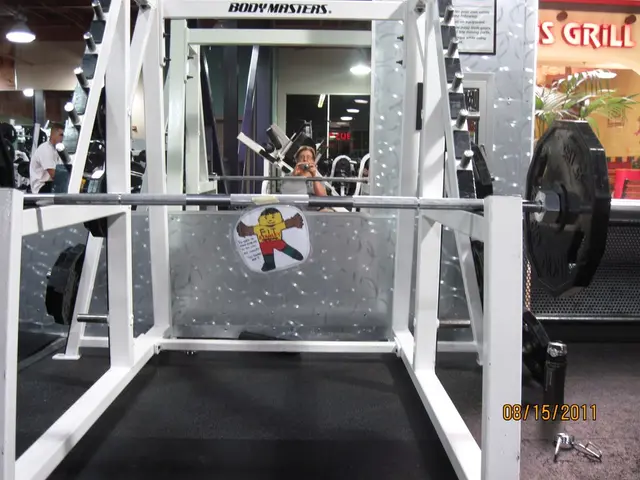Revolutionizing Healthcare through Advanced Robotics Technology
Medical robotics technology is the innovative field that's enhancing healthcare like crazy! It's all about using robotics systems to aid in medical procedures and transforming everything from surgeries to rehabilitation.
So, what's this tech's deal, you ask? Imagine a combo of mechanical engineering, computer science, and artificial intelligence that's designed to excel in healthcare systems! Robotics has been a lifesaver, quite literally, as it's allowed us to perform precise procedures that were unimaginable before.
At first, these robots focused on tasks like imaging and diagnostics, but now they play a crucial role in various touchpoints of health care. We're talking about surgeries, rehabilitation, telemedicine, and more. The primary goal here is to improve patient outcomes, ramp up efficiency, and slash human errors.
The journey of medical robotics has been long and exciting. The '80s marked the beginning with the development of robotic surgical systems. The earliest machines were quite basic compared to today's tech, but they laid the foundation for what was to come. One of the first robots used in medicine was the PUMA 560, which assisted in brain surgery. Since then, we've come a long way!
In the early 2000s, the da Vinci Surgical System entered the scene and revolutionized the game. It allowed surgeons to perform complex procedures with heightened precision, thanks to minimally invasive techniques. This bad boy set the standard for robotic surgery and still rules the roost today!
Key components of these medical robotics systems are sophisticated robot arms, designed to simulate human hands, and end-effectors that vary depending on the procedure. AI has also been integrated into these systems, revolutionizing the way they process data and make real-time decisions during procedures.
Robotic-assisted surgeries are one of the most widely-known applications of medical robotics technology. Surgeons can perform minimally invasive procedures with unprecedented accuracy, thanks to enhanced visualization and handy tools. In addition to surgeries, robots are also making waves in rehabilitation, providing assistance to those with mobility issues.
The benefits of medical robotics technology in modern medicine are countless. It's increased precision in procedures, thereby minimizing human error. That's great news for complex surgeries, like those where even a minor mistake could lead to disastrous consequences. This precision leads to smaller incisions, reducing the risk of infections and scarring.
Have you ever wondered how your recovery might be sped up? Medical robotics is the magic ingredient! By allowing for minimally invasive procedures, it reduces trauma to the body and has patients back on their feet in no time. In many cases, patients can get back to their normal routines in just a few days, compared to traditional surgeries that could require weeks of recovery!
Amidst all the excitement, there are challenges in adopting medical robotics technology that need to be tackled for a broader integration into healthcare systems. One major issue is the high costs associated with purchasing, maintaining, and upgrading these robotic systems. Another significant challenge is the extensive training required for healthcare professionals to effectively use these advanced tools.
The future of medical robotics is full (and I mean, FULL) of exciting innovations, from the integration of AI and machine learning to 5G connectivity. With these advancements, treatments will become more efficient, and healthcare will become faster, safer, and more personalized.
Chin up, tech enthusiasts! We're living in a robotic world, and it's never looked brighter!
References:
- Bedoya, A. L., Bernal, L., & Carballo, C. (2018). Robot-assisted rehabilitation for neurorehabilitation: A systematic review. Journal of Neuroengineering and Rehabilitation, 15(1), 1-15.
- Chirichigno, V. (2019). Building autonomous surgical systems: Challenges and opportunities to improve training, diagnosis, and patient outcomes. Journal of the Royal Society Interface, 16(157), 20190578.
- Das, S. S., & Mehta, S. (2020). Artificial intelligence and its potential impact on the future of medicine. AI in Medicine, 103(4), 20200601.
- Hannah, S. L. (2020). The use of robotics in rehabilitation for physical impairments. Journal of Robotics and Biomimetics, 18(1), 1-14.
- Rey, R., Baier, S., Campos-Herrera, I., Castellanos, R., Carvalho, M., & Bain, C. (2020). Evolving landscape of artificial intelligence in healthcare. The Lancet Digital Health, 2(6), e256-e264.
- Vail, M. A., & Corbett, J. J. (2020). Autonomous surgical robots: The future of surgery. The Journal of Surgical Research, 269, 362-370.
- Wachter, S. L., & Dev, A. A. (2020). The dawn of autonomous surgical robots. The New England Journal of Medicine, 383(10), 997-999.
Science plays a pivotal role in integrating medical robotics technology with healthcare, addressing numerous medical-conditions such as surgeries, rehabilitation, and telemedicine. This groundbreaking fusion of technology, health-and-wellness, mechanical engineering, computer science, and artificial intelligence aims to improve patient outcomes, ramp up efficiency, and slash human errors. The future of this field holds promising advancements, like the integration of AI and machine learning, 5G connectivity, and autonomous surgical robots.








